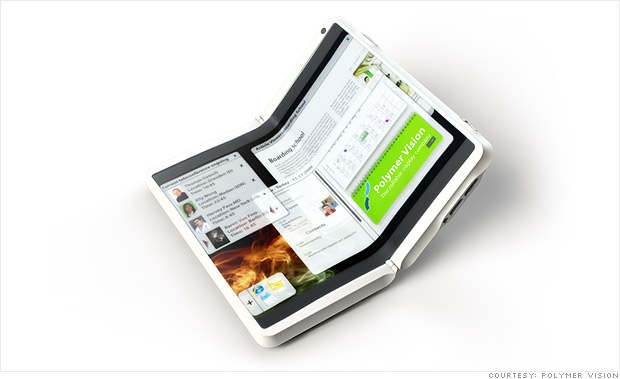Search News

Imagine an electronic newspaper that can be folded up and put in a briefcase, just like the real thing, or a tablet that can shrink down to the size of a cell phone and back up again -- with no glass at risk of shattering.
Flexible screens have drawn attention from both startups and big vendors. Hewlett-Packard is hawking its flexible Mylar screen displays for a variety of potential uses, including wallpaper that changes its design, price tags that update in real time, armbands for military communications and more.
HP says consumers could see the tech in use by 2013, but Forrester is more bearish. Because manufacturers have so far failed to find an ideal market or customers for the bendy critters, they probably won't hit the mainstream until 2015, it says.
As with any evolving field, the flexible screen market so far is mostly littered with failures -- including two e-readers that seemed promising.
Polymer Vision, a spinoff of Philips Electronics, had been pushing a flexible e-reader called Readius for years before the company declared bankruptcy in 2009. Readius never came to market.
After Readius' premature death, the upstart Skiff Reader was meant to be the savior of newspapers and magazines. Prototypes of the bendable e-reader, flaunted at CES 2010, were impressive. Newspaper and magazine articles would appear on the 11.5-inch touchscreen as they did in print, with high-resolution photos, graphics and other design elements intact. The hardware was a thin sheet of stainless steel foil so flexible it could be bent nearly in half.
Skiff promised to go on sale in Sprint stores later in the year, but it never got the chance. Rupert Murdoch's News Corp. bought the company in June 2010 for its publishing platform. It had no interest in the hardware, which it killed.
